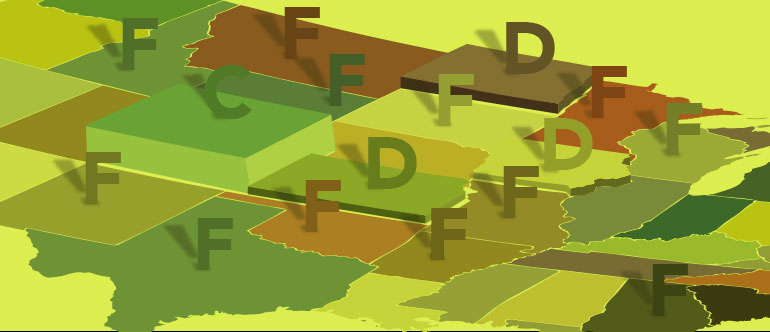There’s a Good Chance Your State Gets an “F” in Healthcare Price Transparency


The 2014 “Report Card on State Price Transparency Laws” is out, and its authors give “Fs” to price transparency efforts in 45 of 50 states. According to the Catalyst for Payment Reform (CPR) and the Health Care Incentives Improvement Institute (HCI3), who collaborated on the report for the second year, that’s not progress. Last year, they failed only 29 states.
In the 2014 report card, only Maine and Massachusetts (both with “Bs”) and Colorado, Vermont and Virginia (all with “Cs”) deserved passing marks. In addition to eliminating a grading curve, the most recent report “examines not only state laws on the books, but also states’ price transparency regulations, price transparency websites and all-payer claims databases.” Even in states with adequate laws, many of the associated websites were “poorly designed or poorly functioning,” significantly limiting the real accessibility of the data.
I’ve been watching the price transparency movement in healthcare for quite some time (and have written in great detail about the opportunity presented by the transparency movement for hospitals and insurers). I agree with CPR and HCI3 when they say, “With consumers taking on a rising share of their healthcare costs, access to meaningful price information is more important than ever.”
While the CPR/HCI3 report targets policy makers and consumer advocates in an attempt to fuel a dialogue and inspire legislation, my interest is in the roles of hospitals and insurers. I do not recommend that they rely on state or other third-party sites to represent them entirely. I would like to see payers and providers deliver on their own price (and quality) transparency tools and resources. In addition to more easily managing design and function, healthcare organizations who lead the way with this effort begin to earn greater consumer trust and loyalty… and get out in front of their competitors.
Other Media Logic blog posts on price transparency:






